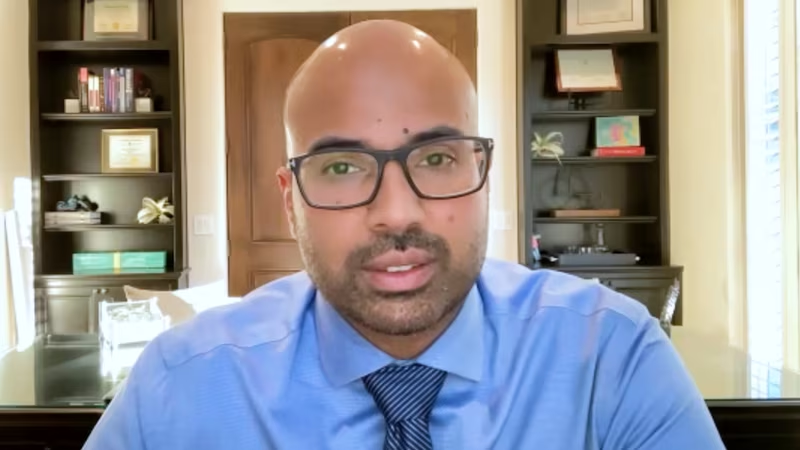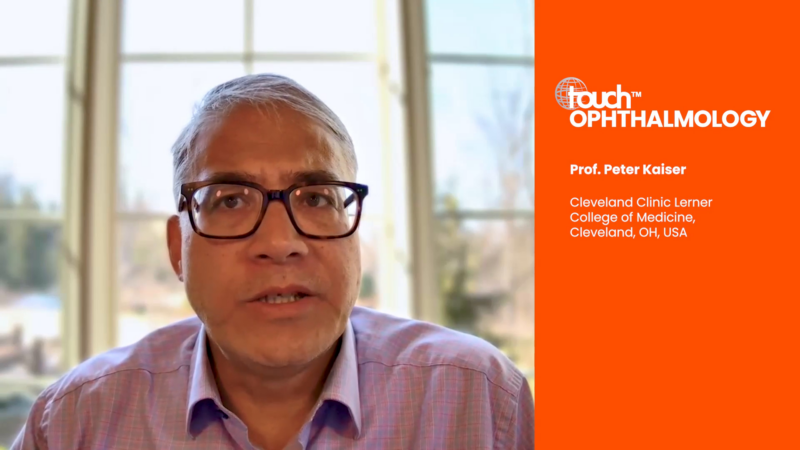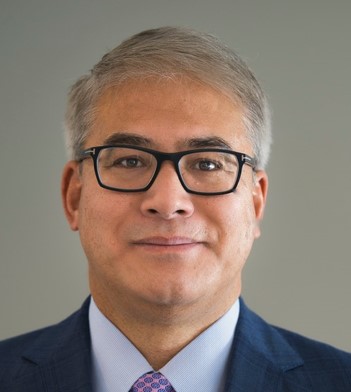touchEXPERT FOCUS
 Single expert faculty answers questions on a specific theme offering practical insights drawn directly from daily practice.
Close
Single expert faculty answers questions on a specific theme offering practical insights drawn directly from daily practice.
Close
 Single expert faculty answers questions on a specific theme offering practical insights drawn directly from daily practice.
Close
Single expert faculty answers questions on a specific theme offering practical insights drawn directly from daily practice.
Close
Precision in practice: Adopting emerging therapies for retinal diseases to reduce burden of disease
Learning Objectives
After watching this activity, participants should be better able to:
- Evaluate the role of newly available treatments in reducing the burden of treatment in patients with nAMD and DMO
- Assess new extended dosing approaches for patients with nAMD and DMO based on individual patient requirements and preferences
Overview
In this interview, Prof. Peter Kaiser discusses the current clinical landscape for neovascular age-related macular degeneration (nAMD) and diabetic macular oedema (DMO), shares his perspective on how newly available treatments are influencing the existing standard of care, and provides guidance on how new therapies can be effectively integrated into clinical practice. read more
Target Audience
Ophthalmologists, including retinal and vitreo-retinal specialists involved in the management of patients with nAMD or DMO.
EBAC® Accreditation
touchIME is an EBAC® accredited provider since 2023.
This programme is accredited by the European Board for Accreditation of Continuing Education for Health Professionals (EBAC®) for 33 minutes of effective education time.
The Accreditation Council for Continuing Medical Education (ACCME) and the Royal College of Physicians and Surgeons of Canada hold an agreement on mutual recognition on substantive equivalency of accreditation systems with EBAC®.
Through an agreement between the European Board for Accreditation of Continuing Education for Health Professionals and the American Medical Association (AMA), physicians may convert EBAC® CE credits to AMA PRA Category 1 CreditsTM. Information on the process to convert EBAC® credit to AMA credit can be found on the AMA website. Other healthcare professionals may obtain from the AMA a certificate of having participated in an activity eligible for conversion of credit to AMA PRA Category 1 CreditTM.
Faculty Disclosure Statement / Conflict of Interest Policy
In compliance with EBAC® guidelines, all speakers/chairpersons participating in this programme have disclosed or indicated potential conflicts of interest, which might cause a bias in the presentations. The Organizing Committee/Course Director is responsible for ensuring that all potential conflicts of interest relevant to the event have been mitigated and declared to the audience prior to the CME activities.
Faculty
Prof. Peter Kaiser discloses: Employee or independent contractor relationship with Ocular Therapeutix. Consultancy fees from AAVantgarde Bio, AbbVie, Alcon, Alexion, Alkeus, Allgenesis, Alzheon, Amaros AI, Annexon Biosciences, AsclepiX, Astellas, Augen Therapeutics, Aviceda, Bausch & Lomb, Bayer, Beacon Therapeutics (AGTC), Biogen Idec, Bionic Vision Technologies, Carl Zeiss Meditec, Celltrion Healthcare Co., Complement Therapeutics, Endogena Therapeutics, Frontera Therapeutics, Galimedix, Innovent, Invirsa, iRenix, Isarna, Janssen, jCyte, Kanaph Therapeutics, Kanghong, Kera Therapeutics, Kriya Therapeutics, Nanoscope Therapeutics, Ocugenix, Ocular Therapeutix (E), Oculis, Omeros, Osanni Bio, Panther Pharmaceuticals, Ray Therapeutics, Re-Vana, RegenxBio, Resonance Medicine Inc., RetinAI Medical AG, RevOpsis, Roivant, Samsung Bioepis, Sandoz, SGN Nanopharma Inc., SmileBiotek, Stealth BioTherapeutics, Stuart Therapeutics, Sustained Nano Systems, Takeda, Théa, Tilak, Unity Biotechnology, Vanotech, Visgenx and Zhuhai Ltd. Stock/Shareholder (self-managed) from Ocular Therapeutix.
Touch Medical Contributors
Katrina Lester has no financial interests/relationships or affiliations in relation to this activity.
Requirements for Successful Completion
Certificates of Completion may be awarded upon successful completion of the post-test and evaluation form. If you have completed one hour or more of effective education through EBAC® accredited CE activities, please contact us at accreditation@touchime.org to receive your EBAC® CE credit certificate. EBAC® grants 1 CE credit for every hour of education completed.
Date of original release: 31 March 2025. Date credits expire: 31 March 2027.
Time to complete: 33 minutes
If you have any questions regarding the EBAC® credits, please contact accreditation@touchime.org
You may also be interested in...

REGISTER NOW FOR FREE ACCESS TO
- 1000+ topical and insightful peer-reviewed journal articles
- 100+ hours of bite-sized congress highlights
- 10 major therapy areas packed with the latest scientific advances
- 150+ specialties offering learn-on-the-go medical education
- + Concise email updates and newsletters so you never miss out

Log into your Touch Account
Earn and track your CME credits on the go, save articles for later, and follow the latest congress coverage.
Sign up with an Email
Or use a .
This Functionality is for
Members Only
Explore the latest in medical education and stay current in your field. Create a free account to track your learning.


















